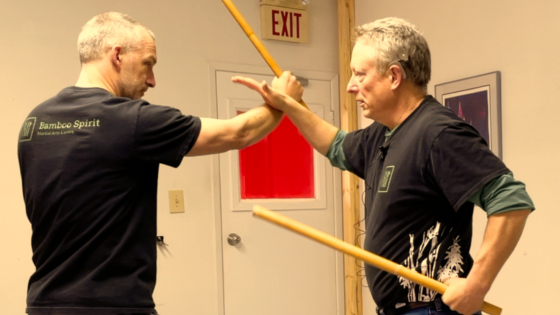Taking A Break From Pumping Iron: I’ll Be Back!
As many of you know, I returned to the gym in June after sufficiently recovering from my hip replacement surgery. First, my sessions at the gym from June to August were experimental in the sense that I tried out different lifting routines. I finally settled on a challenging routine that was a good fit with martial arts. I dove into the routine the week after returning from the cottage.
If you are not able to view the video, go to here.
I have made steady progress, attending the gym six days a week. I do two pushing, two pulling, and two leg sessions weekly. Each session is an action-packed 45 minutes long.
However, my progress has slowed, and my mental energy has been ebbing lately.
It’s time for a week-long break from pumping iron.
Let me explain. One of the hottest buzzwords in the sports world during the last few years is “load management.”
What is “load management,” those unfamiliar with the term might ask.
“Load management” is a fancy term for “rest.” Interestingly, college and professional sports resort to sports science to assess a player’s physical activity. For example, players on the Notre Dame Football team wear a “Catapult GPS monitoring device” during practices. This device can track how many reps they are getting in practice, and “the numbers include how much and how fast the players run, how often they are changing directions and how frequently they are engaging in collisions.” See Blue and Gold Illustrated, October 28, 2023 edition.
The article implies that the team also collects game data. Using the data, the coaching staff shortened many practices, making them more efficient.
This is fascinating stuff. It’s long been observed that the fresher the team is at the end of a regular season, the more likely it is to win.
In short, the more breaks and rest a player gets, the more likely he or she will be in peak condition at the end of a season.
Ditto for the NBA (82-game regular season) and Major League Baseball (162 games). Both are long grinding seasons, and more teams are resorting to sports science to determine when and how much players rest during the season. Given this, I don’t think any player will ever break Cal Ripken’s record of consecutive games played (2,632).
There are sound reasons for this trend. Whether on the college or professional level, teams want to maximize their chances of winning, ensuring they are well-rested for the season’s home stretch.
I do not doubt the emphasis on load management will probably prolong players’ careers. Rest and recovery are necessary for competing or training at the highest level.
I’m sure old-timers from the 1950s and 1960s might think today’s players are not as tough as they were. Maybe. On the other hand, many of the old-timers’ careers ended early.
Remember Sandy Koufax, one of the greatest pitchers of all time? His performance from 1962 to 1966 rank among the greatest five-year stretch of any pitcher in baseball history.
If you are not able to view the video, go here.
Unfortunately, he had to retire at 30 due to severe arthritis in his pitching elbow. Think about that. Back then, athletes were expected to play anytime and anywhere, regardless of their physical condition. Imagine what Koufax could have done with today’s “load management” philosophy and medical technology.
What’s my point? I believe the “load management” trend is valid. Taking a break from pumping iron is a good idea.
All that said, we are not professional athletes and don’t have access to high-tech gadgets to monitor our physical activity. Man, I’d love to get my hands on a “Catapult GPS tracking device” just for the hell of it.

Many of you know I have set physical fitness goals for my 60th birthday (next September). As such, I am very motivated and have been working out hard at the gym and teaching private lessons. I have no desire to drive myself into the ground. Consequently, I decided it was time to get some solid answers on how often I should take a break from a physically demanding regimen.
I found that a break every eight to sixteen weeks is generally accepted in the physical fitness world. That’s a pretty wide range, but it makes sense. First, you can recharge yourself mentally. Secondly, a break allows your body to adapt and recover from the physical stress.
As such, a one-week break every eight weeks makes sense for a 59-year-old like me. In addition to the above benefits, I can step back and tweak my workout routine as needed.
As it turns out, this week is week nine after my cottage vacation.
For the most part, this is a great time to take a break from lifting. Why? Because the next break is during the week of Christmas—PERFECT! It also coincides with my annual two-week break from teaching private lessons.
With age comes wisdom. I was not so wise in my younger days, and I have no desire to repeat my mistakes. I don’t want to unnecessarily ruin my body like many hardcore martial artists and athletes have. While I have consciously scheduled breaks from private lessons in the past, I have not done so concerning lifting. It’s time to schedule regular eight-week breaks from lifting!
My body is feeling it, and it feels right to rest and recover for a week.
Links to articles I found:
(1) Men’s Health.
(2) Exercise.com
(3) Livestrong.
How many of you take breaks from heavy-duty training? Let me know in the comments!
Additional Reading
- Youth Vs Experience
- Back From the Cottage!
- The End of My Break Fall Career
- The Geezer Phase of Being A Martial Artist
- Going Back To The Gym
On another note, please consider buying me a beer or a cup of coffee.
I need your help defraying the increasing expenses of the blog/website.
A huge thank you in advance!
Make a one-time donation
Make a monthly donation
Make a yearly donation
Choose an amount
Or enter a custom amount.
Your contribution is appreciated.
Your contribution is appreciated.
Your contribution is appreciated.
DonateDonate monthlyDonate yearlyShare this post:
- Click to share on Twitter (Opens in new window)
- Click to share on Facebook (Opens in new window)
- Click to share on LinkedIn (Opens in new window)
- Click to share on WhatsApp (Opens in new window)
- Click to share on Nextdoor (Opens in new window)
- Click to share on Pinterest (Opens in new window)
- Click to email a link to a friend (Opens in new window)
Brian Johns
Related Posts
3 Comments
Leave a Reply Cancel reply
Categories
- Arnis/Kali/Eskrima (113)
- Book Review (8)
- DVD Reviews (3)
- Guest Post (4)
- Inspiration (24)
- Martial Arts (99)
- My story (92)
- Safety (14)
- Tips & tricks (6)
- Uncategorized (3)
- YouTube Videos (8)






[…] of this post, I am still working on my physical fitness and martial arts skills. I am not satisfied with […]
[…] after the test, I knew what the most obvious fix was. While I’ve done bench presses, dumbbell presses and chest flys as part of my chest routine, I was not consistently incorporating push-ups. If I want to do 60 push-ups by my 60th birthday, I […]
[…] Taking A Break From Pumping Iron: I’ll Be Back! […]